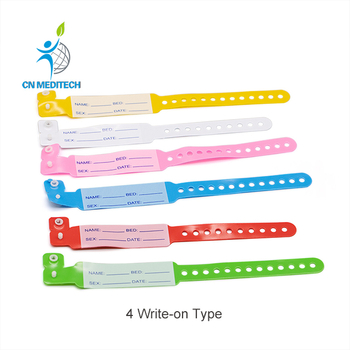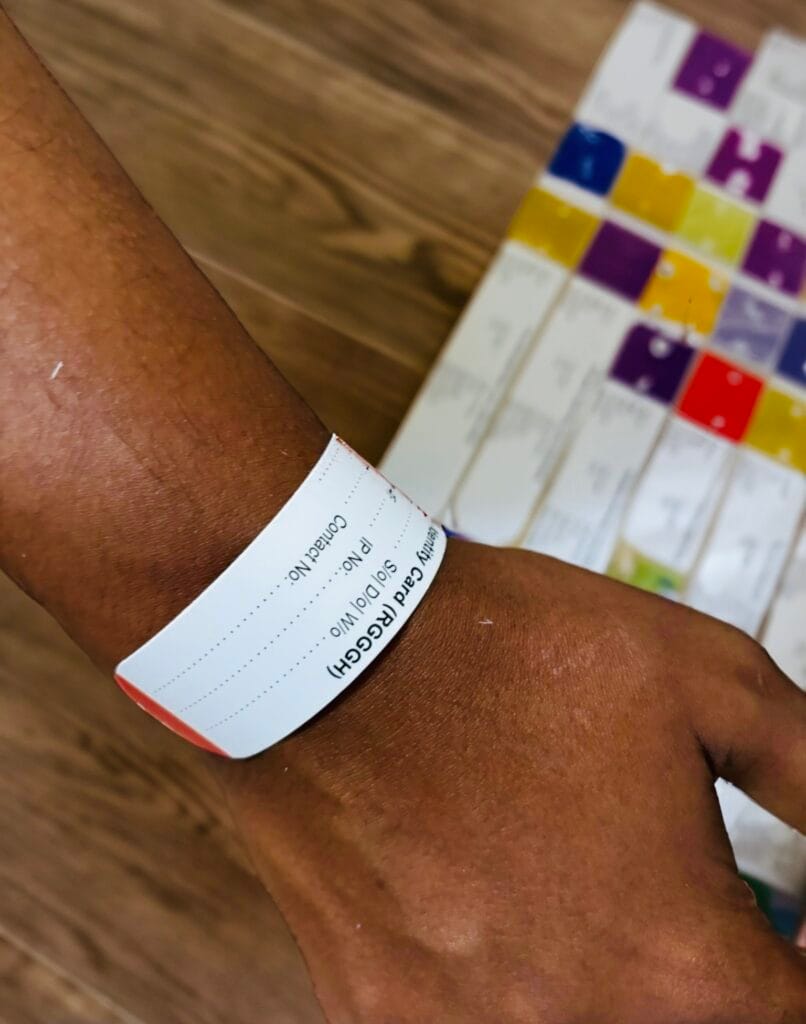Enhancing Security: The Relevance of Individual Identification Bands in Medical Care
In the world of medical care, the effectiveness of client identification bands can not be overemphasized, as they offer as a fundamental safeguard versus misidentification and succeeding mistakes. As we discover the diverse function of these bands, it ends up being apparent that their importance expands beyond plain identification, raising inquiries concerning finest methods and future innovations in patient safety and security.
Introduction of Individual Identification Bands
Patient recognition bands play a critical duty in ensuring the security and precision of person care in medical care settings. These bands, normally endured the wrist or ankle, work as an important tool for verifying individual identity, consequently decreasing the danger of errors in therapy, medicine management, and other healthcare treatments. Made from resilient products, client identification bands typically consist of essential info such as the patient's name, day of birth, medical record number, and barcodes or QR codes for scanning.
The implementation of person identification bands is essential in different medical care environments, including hospitals, outpatient centers, and long-term care institutions. They contribute to a methodical strategy in client monitoring, enabling health care specialists to quickly and precisely recognize clients, particularly in high-pressure circumstances where quick decision-making is vital.
In addition, the usage of these bands is lined up with regulative requirements focused on improving client safety - Patient Identification Band. By ensuring that each patient's information is quickly verifiable and easily easily accessible, medical care service providers can keep a high standard of care, minimize the occurrence of unfavorable events, and foster a society of security within healthcare institutions
Benefits of Accurate Identification
Precise identification is fundamental to boosting person safety and security and care top quality in health care settings. It serves as the first line of protection versus errors that could lead to damaging person outcomes. By ensuring that each person is properly identified through reliable methods, such as client recognition bands, doctor can dramatically lessen the danger of misidentification, which can lead to inappropriate therapies, drug mistakes, and even medical mix-ups.
Additionally, exact client recognition helps with reliable communication among healthcare groups. When all team member can regularly recognize patients, they can share crucial information a lot more efficiently, causing better sychronisation of treatment. This is especially crucial in emergency scenarios where timely interventions are crucial.
Additionally, exact identification supports compliance with governing requirements, therefore decreasing the danger of lawful consequences for health care centers. It fosters depend on between clients and doctor, as patients feel extra secure understanding that their identities are being safeguarded.

Usual Obstacles Dealt With
Making sure effective patient identification in medical care settings provides an array of challenges that can compromise security and care top quality. Patients might arrive in a state of confusion or distress, making precise recognition challenging.
An additional challenge is the reliance on human aspects in recognition treatments. Healthcare experts might accidentally misinterpret or ignore recognition protocols, specifically in high-stress environments such as emergency divisions. This can lead to errors, consisting of the management of incorrect treatments or drugs.
Technical concerns also pose difficulties. Although you can check here electronic health record (EHR) systems are created to enhance person recognition, system interruptions or customer errors can interrupt the procedure. Moreover, the physical style of client ID bands can result in readability problems, particularly in cases where bands are damaged or covered.
Last but not least, inconsistent training among team pertaining to recognition procedures can cause voids in understanding and technique. Resolving these obstacles is critical for enhancing person safety and security and making sure that identification bands offer their desired purpose efficiently.
Best Practices for Implementation
To properly carry out patient recognition bands in health care setups, organizations have to adopt a complex method that prioritizes technology, standardization, and training assimilation. Standardization involves developing clear procedures for the style, application, and use of recognition bands across all divisions. This guarantees uniformity and reduces the danger of mistakes linked to variations in band types or identifying approaches.


Training is important for all healthcare staff to guarantee they recognize the value of precise patient recognition, just how to effectively read and apply recognition bands, and the procedures to comply with in situation of inconsistencies. Routine workshops and correspondence course can reinforce this expertise and promote a society of safety.
Innovation integration plays an essential function in boosting the efficiency of individual identification bands. Making use of barcode scanning or RFID technology can simplify the recognition procedure, permitting real-time confirmation of client identifications. Furthermore, digital wellness record systems should be set up to consist of signals for mismatches between the identification band and patient information.
Future Trends in Patient Safety And Security
As medical care remains to develop, the focus on person safety is most likely to heighten, driven by developments in technology and a higher understanding of systemic risks. Emerging fads suggest a change towards more incorporated systems that utilize data analytics, man-made knowledge, and artificial intelligence to boost individual recognition processes. These technologies can aid determine potential safety and security concerns prior to they rise, thereby reducing mistakes related to misidentification.
In addition, the application of blockchain innovation may reinvent how patient data is securely shared among doctor, making sure that identification bands are continually exact and up-to-date. This will certainly not just improve patient safety but also facilitate seamless interaction throughout multidisciplinary groups.

Furthermore, the growing concentrate on personalized medication is expected to affect person safety protocols. By incorporating demographic and hereditary details into identification systems, healthcare experts can tailor treatments better, minimizing the threats of unfavorable reactions as a result of misidentification.
Verdict
To conclude, client recognition bands act as a crucial element in improving security within healthcare environments. By look at these guys facilitating precise client recognition, these bands significantly lower the danger of mistakes connected with misidentification, unacceptable treatments, and medicine administration. Despite obstacles in execution, adherence to best methods and the assimilation of arising technologies can additionally boost their efficiency. Ultimately, the continued emphasis on robust recognition methods will add to better client results and overall safety and security in health care setups.
In the realm of medical care, the efficiency of person recognition bands can not be overemphasized, as they serve as an essential safeguard against misidentification and subsequent errors.Patient recognition bands play a crucial duty in ensuring the safety and security and precision of individual care in healthcare settings. Made from resilient materials, individual identification bands commonly address include essential information such as the client's name, date of birth, medical document number, and barcodes or QR codes for scanning.
By ensuring that each patient is appropriately recognized through dependable ways, such as client recognition bands, health care service providers can considerably reduce the risk of misidentification, which can lead to improper treatments, medication errors, and even surgical mix-ups.
In final thought, individual identification bands serve as a crucial element in enhancing safety within health care atmospheres. Patient Identification Band.
Comments on “The Role of Patient Identification Band in Making Sure Accurate Medical Records”